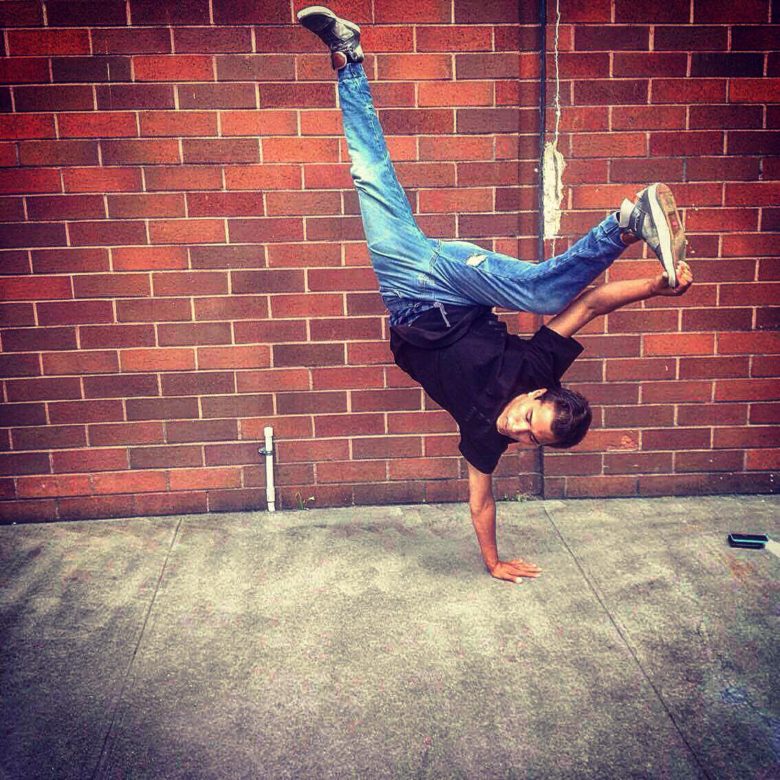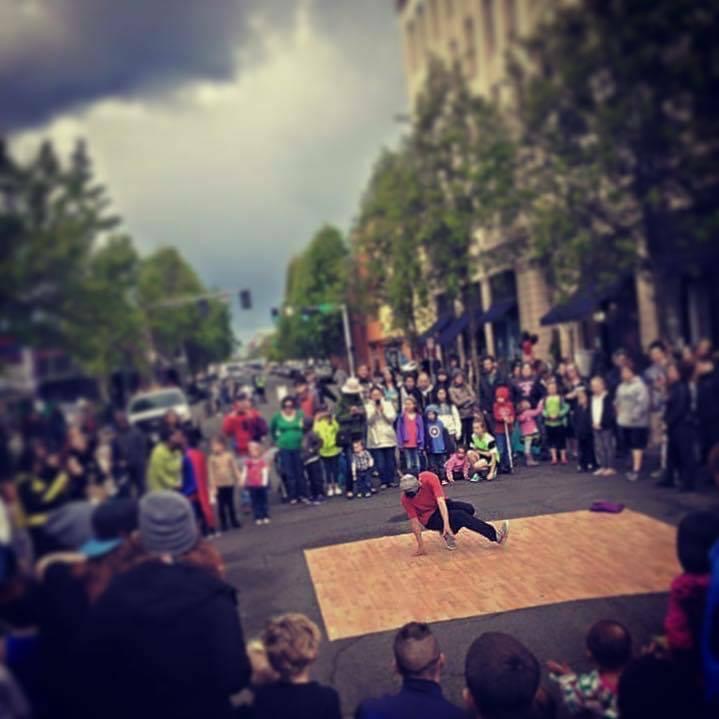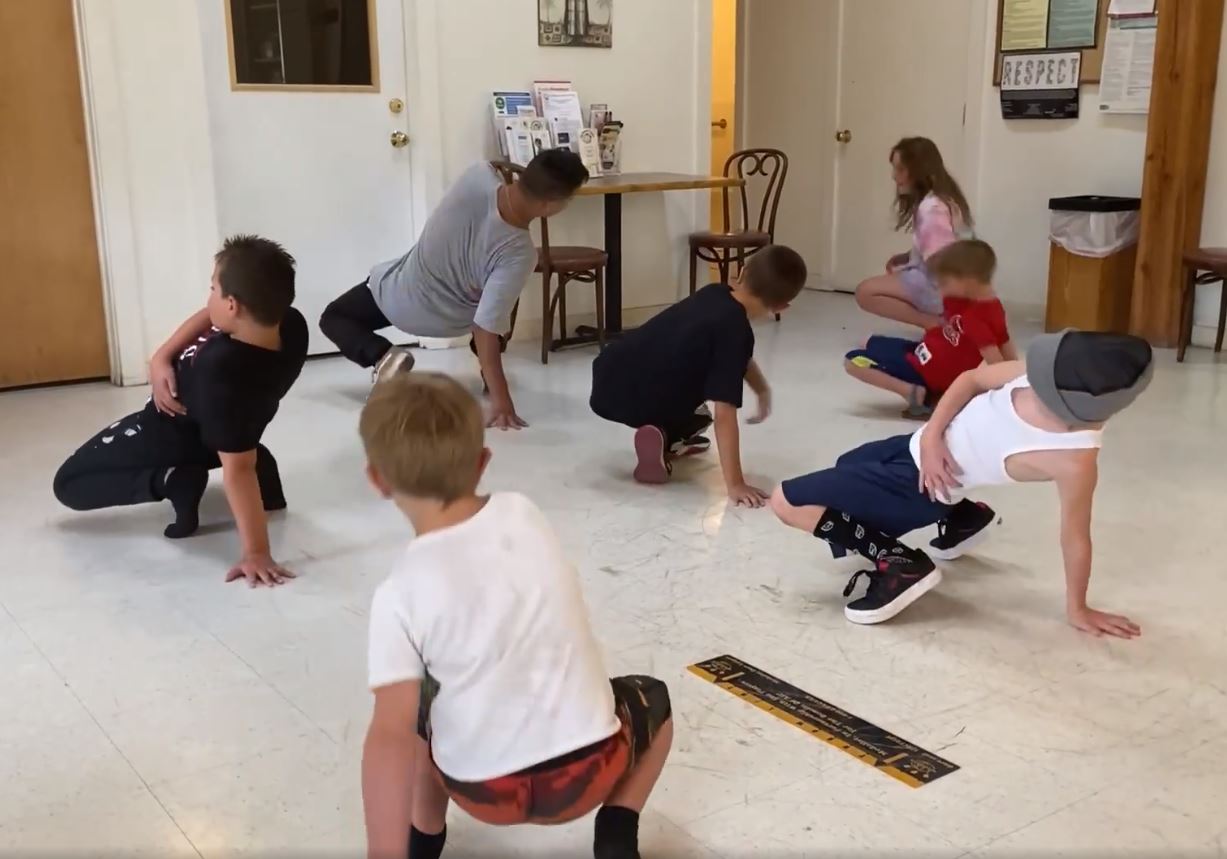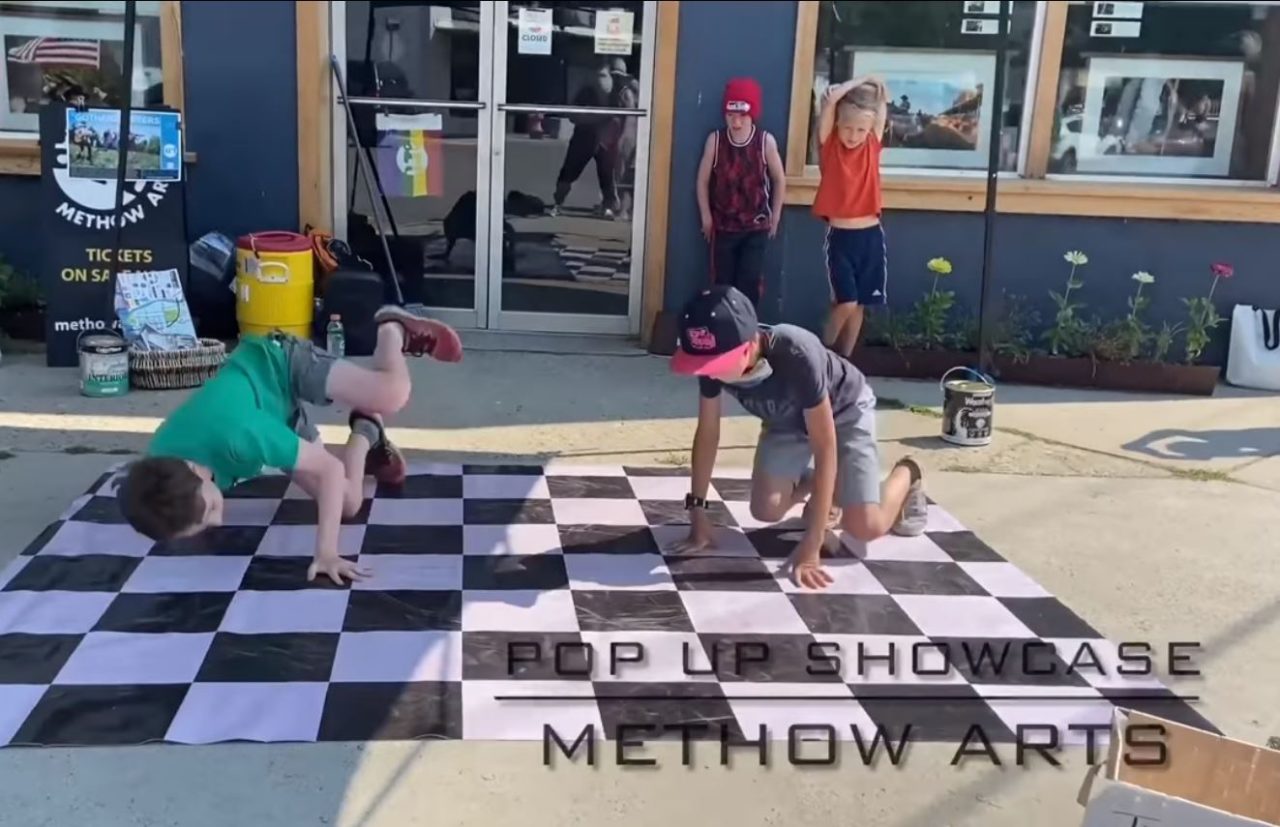Street Dance Style
2021

Street dance may have evolved in an urban setting, but b-boy Miguel Renteria is showing that it can thrive in rural communities as well.
Renteria, who is a teaching artist for Methow Arts, moved to the Methow Valley from Olympia in the fall of 2020, bringing with him a decade of experience breaking and competing in street dance “battles,” as well as several years of experience teaching breaking to youth at places like Boys and Girls Clubs.
Renteria began dancing because he grew up in a musical family and was surrounded by dancers, but kept with it because, he says, “I found that it was a good outlet for me to express my emotions—to release anger without violence.”

As a child raised in the foster system, Renteria needed street dance’s ethic of inclusion and community as sources of strength and stability. Because of street dance’s vernacular nature, its unchoreographed, improvisational form, and its socially inclusive vibe, Renteria was able to immerse himself in it and find the acceptance he craved.
Renteria is no stranger to challenge. He was moved around the foster care system, at times suffering abuse, never feeling like he belonged in a family. At age 18 he graduated from both high school and the foster care system, and became financially emancipated. At 20 he became a father. He has made some poor decisions, and has been accountable for the consequences.
But graced with an optimistic outlook on life and a strong work ethic, Renteria is finding his place in the world. Moving to Twisp represented a fresh start for Renteria, although he says he couldn’t have predicted how meaningful it would be for him to live in a community that so celebrates the arts; he was just looking for a safe place to raise his young son, who is now in kindergarten at Methow Valley Elementary School. He found that safe place, as well as a steady job at beloved grocery store Hank’s Harvest Foods, a mobile home he could purchase in a housing market that is increasingly prohibitive to the working class, and a community thirsty for his passion for street dance.

A few months into his new life in the Methow Valley, Renteria was recruited by Methow Arts to make breakdance lesson videos as part of Methow Arts’ remote learning art instruction videos program. The videos were a big hit, garnering views from all over the region.
Subsequently, Renteria taught breaking at Methow Valley Elementary School’s afterschool enrichment program. Response from students was so enthusiastic that Renteria launched a 9-week summer breakdance series, which filled quickly with 40 students from throughout Okanogan County, some of whom showcased their moves in two public street dance demonstrations in Twisp during the summer. Renteria intends to continue spreading the techniques and the culture of breaking throughout schools in Okanogan County in the fall, through Methow Arts’ Artist in Residence program.
Modern street dance evolved in the 1970s outside of traditional dance studios and clubs because African Americans, Latinos, and other people of color were not welcome in the conventional dance spaces. For Renteria, part of breaking’s appeal is the way it brings different people from different cultures together. “It bridges language and cultural barriers,” he says. “You can communicate with anyone through dance.”

“We respect each other for what we do,” he continues. “We support each other.” This supportive environment is evident in Renteria’s youth programs. He encourages students to express themselves through movement, creating a safe environment for kids to dance in a way that reflects how they feel. “It’s fun, authentic, and therapeutic,” he says. “There’s endless creativity. Breaking allows you to do as you feel.”
“I dance for myself, for my mental health,” Renteria says. “I like doing it for myself; I feel free and happy. When I teach or perform, I want others to feel the same—to feel like they’re in a safe and free environment.”
Renteria is active in the breaking battle scene on Washington State’s west side (watch one of his recent battles HERE), but as a working single father, he is tied to a work and school schedule east of the Cascades. Teaching breaking and watching his student blossom on the dance floor feeds him as much as competing does. “I’m trying to spread breaking culture in a positive way,” he says. “I’m creating opportunities for the next generation of dancers. I’m always going to be learning, passing it on, and hope that someday these kids will pass it on too.”
Read more about Renteria HERE. Find his breaking instruction videos HERE.